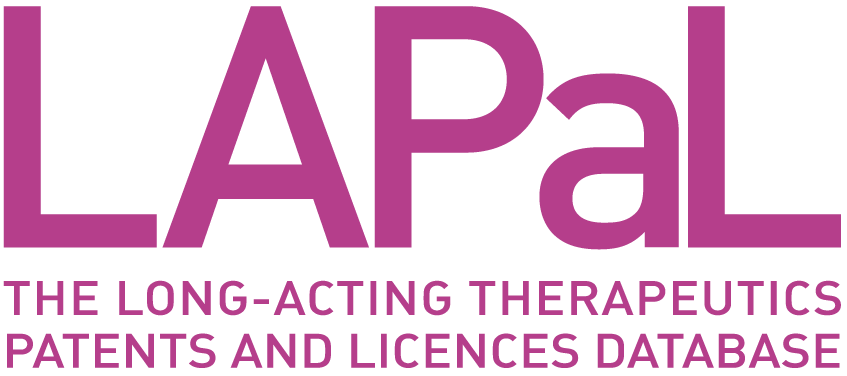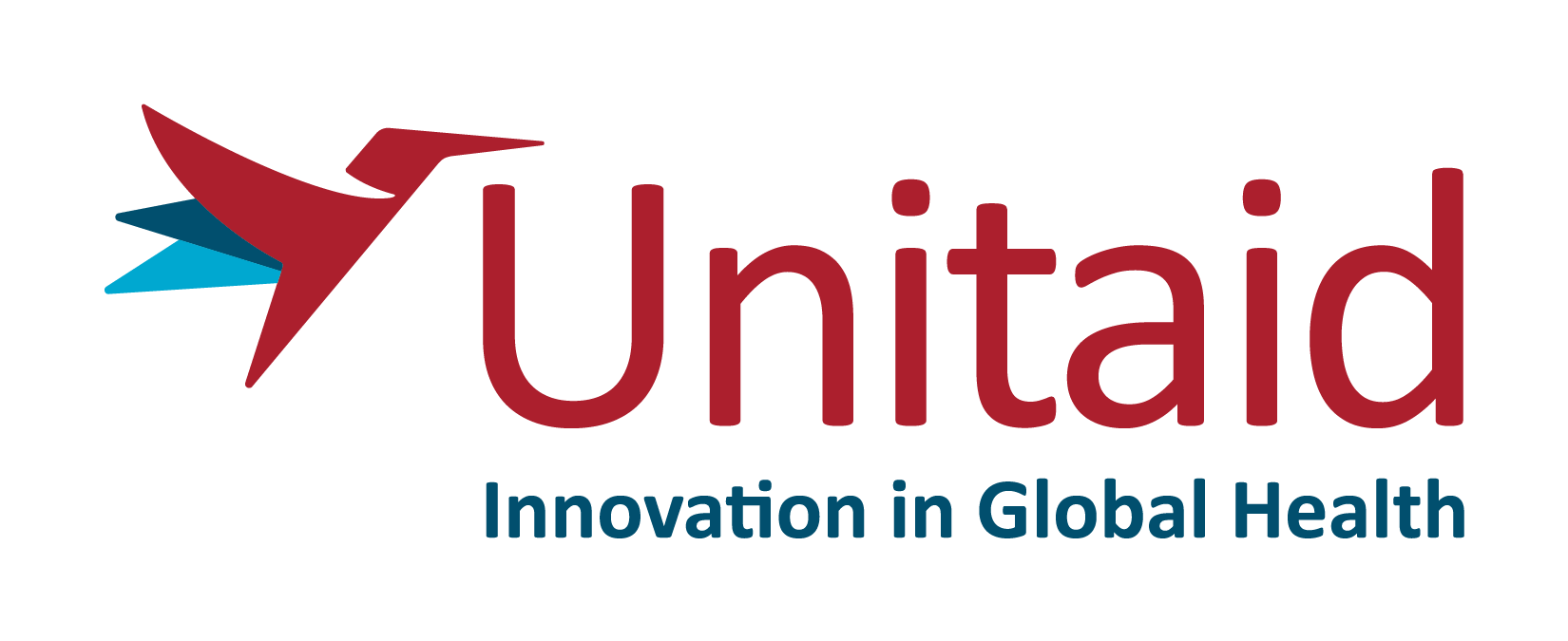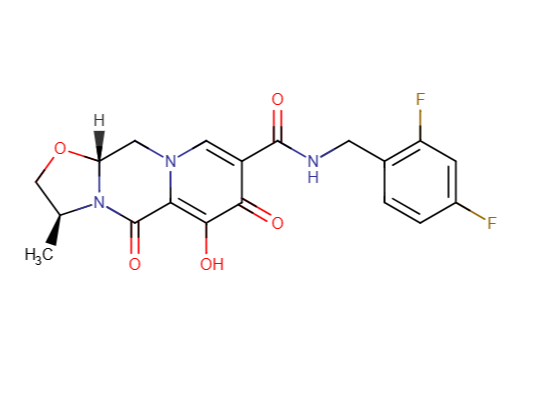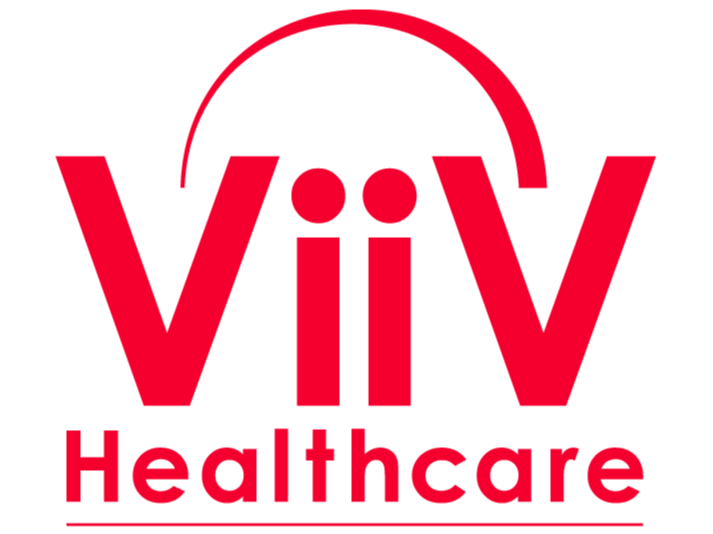
|
Developed by 

|
Supported by 

|

Cabotegravir 4-monthly (Q4M)
Developer(s)

|
ViiV Healthcare Originator
https://viivhealthcare.com/
United Kingdom ViiV Healthcare is a pharmaceutical company that specializes in the development of therapies for HIV infection. The company is headquartered in Brentford in the United Kingdom and was initially formed in November 2009 as a part of a joint venture between GlaxoSmithKline and Pfizer. |
Drug structure

Cabotegravir Chemical Structure
Sourced from Drugbank
Drug information
Associated long-acting platforms
Aqueous drug particle suspension
Administration route
Subcutaneous, Intramuscular, To be determined
Therapeutic area(s)
Use case(s)
Use of drug
Ease of administration
User acceptance
Not provided
Dosage
Available dose and strength
Formulation is in clinical development but not yet approved or commercially available. Pharmacokinetic simulations predict that a 1600 mg/3mL IM dose would be sufficient for a Q4M dosing schedule.
Frequency of administration
Once every four months (Q4M)
Maximum dose
1600 mg (2.7x CAB-LA)
Recommended dosing regimen
Phase I trial evaluating safety and pharmacokinetic profile used doses at 800 mg, 1200 mg, and 1600 mg at four monthly intervals. Phase 3 trial experimental arm: Participants received lead-in injections comprising cabotegravir LA during month one and injections of a new formulation of CAB LA at Month 3, Month 5 and every 4 months thereafter to Month 29.
Additional comments
Not provided
Dosage link(s)
Not provided
Drug information
Drug's link(s)
Generic name
Brand name
Compound type
Summary
Approval status
Regulatory authorities
Delivery device(s)
No delivery device
Scale-up and manufacturing prospects
Scale-up prospects
CAB-ULA is a novel formulation developed by ViiV Healthcare that doubles the concentration of cabotegravir, exhibits favourable tolerability and safety, with a PK profile that supports dose intervals of ≥4 months. Detailed manufacturing information regarding the new CAB-ULA formulation is not yet available.
Tentative equipment list for manufacturing
Not provided
Manufacturing
Not provided
Specific analytical instrument required for characterization of formulation
Not provided
Clinical trials
EXTEND4M
Identifier
NCT06741397
Link
https://clinicaltrials.gov/study/NCT06741397
Phase
Phase II
Status
Active, not recruiting
Sponsor
ViiV Healthcare
More details
A single arm, repeat dose study to evaluate the pharmacokinetic profile, safety, and tolerability of a new formulation of cabotegravir LA injected intramuscularly Q4M in adolescent and adult participants at risk of HIV acquisition.
Purpose
A Study to Evaluate the Pharmacokinetics, Safety, and Tolerability of a New Formulation of Cabotegravir Long-Acting Administered Intramuscularly in a 4-month Dosing Interval (Q4M)
Interventions
Intervention 1
Intervention 2
Countries
Sites / Institutions
Not provided
Trials dates
Anticipated Start Date
Not provided
Actual Start Date
2024-12-20
Anticipated Date of Last Follow-up
2025-04-01
Estimated Primary Completion Date
2026-09-03
Estimated Completion Date
2028-12-28
Actual Primary Completion Date
Not provided
Actual Completion Date
Not provided
Studied populations
Age Cohort
- Children
- Adults
- Older Adults
Genders
- All
Accepts pregnant individuals
No
Accepts lactating individuals
No
Accepts healthy individuals
Yes
Comments about the studied populations
Inclusion Criteria: 1. At the time of obtaining informed consent, adolescent and adult participants weighing at least 35 kg. 2. Participants must have a nonreactive HIV test at Screening (rapid test, nonrapid HIV immunoassay, and HIV RNA) and enrollment (a rapid test, nonrapid HIV immunoassay, and HIV RNA). 3. Participants who are at risk of acquiring HIV, defined as having had anal or vaginal sex in the past 6 months. 4. Participants who are overtly healthy as determined by medical evaluation by a responsible and experienced physician, including medical history, physical examination, laboratory tests and cardiac monitoring at the time of screening. 5. No alcohol or substance use that, in the opinion of the study investigator and medical monitor, would interfere with the study.
Health status
Study type
Interventional (clinical trial)
Enrollment
191
Allocation
Randomized
Intervention model
Single group assignment
Intervention model description
Key end point: CAB trough concentrations Participants receive lead-in injections comprising cabotegravir LA during month one and injections of a new formulation of CAB LA at Month 3, Month 5 and every 4 months thereafter to Month 29
Masking
Open label
Masking description
This is an open label study.
Frequency of administration
Studied LA-formulation(s)
Studied route(s) of administration
Use case
PrEP
Key results
223369
Identifier
NCT06786520
Link
https://clinicaltrials.gov/study/NCT06786520
Phase
Phase I
Status
Recruiting
Sponsor
ViiV Healthcare
More details
A single arm, repeat dose study to evaluate the pharmacokinetics, safety, and tolerability of switching to cabotegravir long-acting 4-monthly formulation (CAB Q4M) from cabotegravir long-acting (CAB LA 2M) in healthy adult volunteers
Purpose
A Study to Evaluate the Pharmacokinetics, Safety, and Tolerability of Cabotegravir Ultra Long-acting (CAB ULA) Following Switch From Cabotegravir Long-acting (CAB LA) in Healthy Adults
Interventions
Intervention 1
Intervention 2
Countries
Sites / Institutions
Not provided
Trials dates
Anticipated Start Date
Not provided
Actual Start Date
2025-01-17
Anticipated Date of Last Follow-up
2025-02-17
Estimated Primary Completion Date
2027-02-17
Estimated Completion Date
2028-02-29
Actual Primary Completion Date
Not provided
Actual Completion Date
Not provided
Studied populations
Age Cohort
- Adults
- Older Adults
Genders
- All
Accepts pregnant individuals
No
Accepts lactating individuals
No
Accepts healthy individuals
Yes
Comments about the studied populations
Inclusion Criteria: * Adult participants greater than or equal to (\>=) 18 years old, weighing at least 35 kg. * Participants who are overtly healthy as determined by medical evaluation. * Assigned male sex at birth or assigned female sex at birth. Participants assigned female sex at birth are eligible to participate if they are of non-childbearing potential, or if they are of childbearing potential and are not pregnant (confirmed by test), not breastfeeding, and are using a highly effective contraceptive method. * Capable of giving written informed consent.
Health status
Study type
Interventional (clinical trial)
Enrollment
60
Allocation
Not provided
Intervention model
Single group assignment
Intervention model description
Participants will receive the CAB LA Q2M regimen up to Month 9 then will receive the CAB ULA Q4M regimen up to Month 23. Key end points are plasma concentration of CAB at the end of the CAB LA 2M phase compared to plasma concentration of CAB at the end of the CAB Q4M phase
Masking
Open label
Masking description
None (Open Label)
Frequency of administration
Studied LA-formulation(s)
Studied route(s) of administration
Use case
PrEP
Key results
Excipients
Proprietary excipients used
Not provided
Novel excipients or existing excipients at a concentration above Inactive Ingredients Database (IID) for the specified route of administration
Not provided
Residual solvents used
Not provided
Patent info
Compound patent families
Patent informations
| Patent description | Representative patent | Categories | Patent holder | Licence with MPP | Patent source |
|---|---|---|---|---|---|
|
Cabotegravir ultra-long acting formulations II
Expiry date: 2044-09-25 The present invention relates to Human Immunodeficiency Virus (HIV) prevention and treatment. In particular, the invention relates to a pharmaceutical composition comprising: cabotegravir; a wetting agent; a stabilizer; and a tonicity adjuster; wherein cabotegravir is present in the form of particles having a mass median diameter (X50) of between (and including) 2.5 μm and 10 μm. |
WO2025068912 | Composition | ViiV Healthcare Company | No |
Patent status
| Patent status/countries | Low, Low- middle and upper-middle | High income |
|---|---|---|
| Granted | ||
| Filed | World Intellectual Property Organization (WIPO) | World Intellectual Property Organization (WIPO), United States of America |
| Not in force |
Patent informations
| Patent description | Representative patent | Categories | Patent holder | Licence with MPP | Patent source |
|---|---|---|---|---|---|
|
Cabotegravir ultra-long acting formulations I
Expiry date: 2043-09-27 The present invention relates to Human Immunodeficiency Virus (HIV) prevention and treatment. In particular, the invention relates to a pharmaceutical composition comprising: cabotegravir; a wetting agent; a stabilizer; and a tonicity adjuster; wherein cabotegravir is present in the form of particles having a mass median diameter (X50) of between (and including) 2.5 µm and 10 µm. |
WO2025068743 | Composition | ViiV Healthcare Company | No |
Patent status
| Patent status/countries | Low, Low- middle and upper-middle | High income |
|---|---|---|
| Granted | ||
| Filed | World Intellectual Property Organization (WIPO) | World Intellectual Property Organization (WIPO) |
| Not in force |
Patent informations
| Patent description | Representative patent | Categories | Patent holder | Licence with MPP | Patent source |
|---|---|---|---|---|---|
|
Cabotegravir processes and intermediates
Expiry date: 2031-03-22 Relates to the preparation of carbamoylpyridone derivatives and intermediates which are useful as HIV integrase inhibitors. |
WO2011119566 | Intermediate(s), Process | Glaxosmithkline Llc | No |
Patent status
| Patent status/countries | Low, Low- middle and upper-middle | High income |
|---|---|---|
| Granted | China, Albania, Serbia, Bosnia and Herzegovina, Montenegro, Türkiye, North Macedonia, India | Liechtenstein, Italy, Norway, Malta, Denmark, Belgium, United Kingdom, Greece, Netherlands, Hungary, Croatia, Switzerland, Spain, San Marino, Slovenia, Austria, Romania, Iceland, Cyprus, Finland, France, Bulgaria, Slovakia, Poland, Latvia, Ireland, Estonia, Germany, Luxembourg, Portugal, Czechia, Lithuania, Monaco, Sweden, Japan, Korea, Republic of, United States of America |
| Filed | San Marino, Singapore, Taiwan, Province of China | |
| Not in force | World Intellectual Property Organization (WIPO) | World Intellectual Property Organization (WIPO) |
Patent informations
| Patent description | Representative patent | Categories | Patent holder | Licence with MPP | Patent source |
|---|---|---|---|---|---|
|
Dolutegravir and Cabotegravir compounds
Expiry date: 2026-04-28 The present invention is to provide a novel compound (I), having the anti-virus activity, particularly the HIV integrase inhibitory activity, and a drug containing the same, particularly an anti-HIV drug, as well as a process and an intermediate thereof. Compound (I) wherein Z<1> is NR<4>; R<1> is hydrogen or lower alkyl; X is a single bond, a hetero atom group selected from O, S, SO, SO2 and NH, or lower alkylene or lower alkenylene in which the hetero atom group may intervene; R<2> is optionally substituted aryl; R<3> is hydrogen, a halogen, hydroxy, optionally substituted lower alkyl etc; and R<4> and Z<2> part taken together forms a ring, to form a polycyclic compound, including e.g., a tricyclic or tetracyclic compound. |
WO2006116764 | Compound | Glaxosmithkline Llc | No |
Patent status
| Patent status/countries | Low, Low- middle and upper-middle | High income |
|---|---|---|
| Granted | Brazil, China, Morocco, Mexico, Philippines, Ukraine, Viet Nam, South Africa, Türkiye, Armenia, Azerbaijan, Belarus, Kyrgyzstan, Kazakhstan, Moldova, Republic of, Tajikistan, Turkmenistan, Nigeria, Colombia, Indonesia, Malaysia, Algeria | United States of America, Australia, Canada, Cyprus, Hong Kong, Israel, Japan, Korea, Republic of, Luxembourg, Norway, New Zealand, Taiwan, Province of China, Austria, Belgium, Bulgaria, Switzerland, Czechia, Germany, Denmark, Estonia, Spain, Finland, France, United Kingdom, Greece, Hungary, Ireland, Iceland, Italy, Liechtenstein, Lithuania, Latvia, Monaco, Netherlands, Poland, Portugal, Romania, Sweden, Slovenia, Slovakia, Russian Federation, Trinidad and Tobago, Singapore |
| Filed | Egypt | United States of America, Cyprus, Luxembourg, Norway, Finland, France, Hungary, Lithuania, Netherlands, Slovenia |
| Not in force | Türkiye, India, World Intellectual Property Organization (WIPO) | United States of America, Cyprus, Hong Kong, Israel, Japan, Luxembourg, Austria, Belgium, Bulgaria, Switzerland, Czechia, Germany, Denmark, Estonia, Spain, Finland, France, United Kingdom, Greece, Hungary, Ireland, Iceland, Italy, Liechtenstein, Lithuania, Latvia, Monaco, Netherlands, Poland, Portugal, Romania, Sweden, Slovenia, Slovakia, World Intellectual Property Organization (WIPO) |
Supporting material
Publications
There are no publication
Additional documents
No documents were uploaded
Access principles
|
|
Collaborate for developmentConsider on a case by case basis, collaborating on developing long acting products with potential significant public health impact, especially for low- and middle-income countries (LMICs), utilising the referred to long-acting technology Not provided |
|
|
Share technical information for match-making assessmentProvide necessary technical information to a potential partner, under confidentiality agreement, to enable preliminary assessment of whether specific medicines of public health importance in LMICs might be compatible with the referred to long-acting technology to achieve a public health benefit Not provided |
|
|
Work with MPP to expand access in LMICsIn the event that a product using the referred to long-acting technology is successfully developed, the technology IP holder(s) will work with the Medicines Patent Pool towards putting in place the most appropriate strategy for timely and affordable access in low and middle-income countries, including through licensing Not provided |
Comment & Information
Not provided